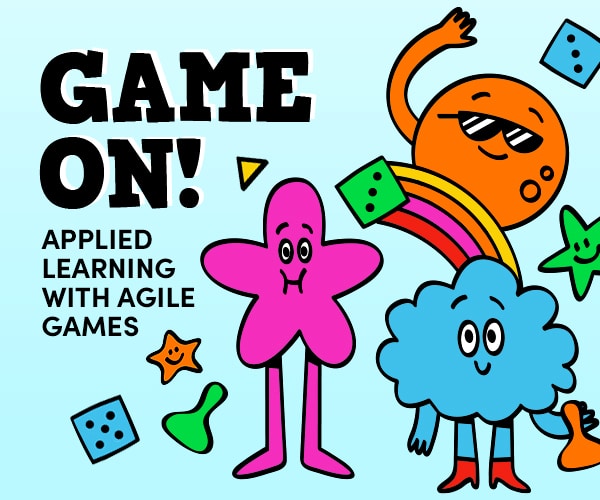Timings:
45-60 mins
Materials:
8-18 people, seated in chairs in a circle
1 deck of Werewolves cards (available on Amazon here)
Instructions:
This is a well-known game (based on the original “Mafia” game) in development circles and can be used as a simple team building, fun exercise to break up a boring meeting or end a challenging retrospective.
The game rules are lengthy to explain, but in a nutshell, this is a game of hidden identities. Each player is given a role card, and a small minority of the group will be werewolves. Werewolves hunt the village members down during the night. At night all players close their eyes, and werewolves are instructed to open them (when instructed by a neutral narrator) and pick off villagers. During the day (eyes open) villagers get the chance to lynch suspicious village members and try to eliminate the werewolves one by one.
More detailed game instructions can be found here.
Learning Points:
Geoff and I tinkered with the rules and roles of the game to emphasize the skills of facilitation. We use the “sheriff” or “mayor” card as a mandatory role in the game. Their role is “open” which means everyone knows they are innocent (NOT a werewolf) and they are immortal (werewolves cannot kill them). We instruct this person that their role is to:
- Help the village reach consensual decisions
- Ask powerful questions
- Give direction without having authority
- Focussing on vocal people in the group rather than giving everyone a free say
- Failure to timebox discussion and then running out of time (village then loses the chance to lynch)
- Failing to stay neutral (believing their own intuitions instead of representing the group)
- Taking decisions on behalf of the team (assuming responsibility)
- Stating what they notice (non-verbal/verbal observations) without any accusation
- Asking the group what they think
- Asking individuals powerful questions
- Recalling key accusations or killings
The original game has been subtly changed into an exercise co-created as part of a collaboration day between myself and Geoff Watts.





